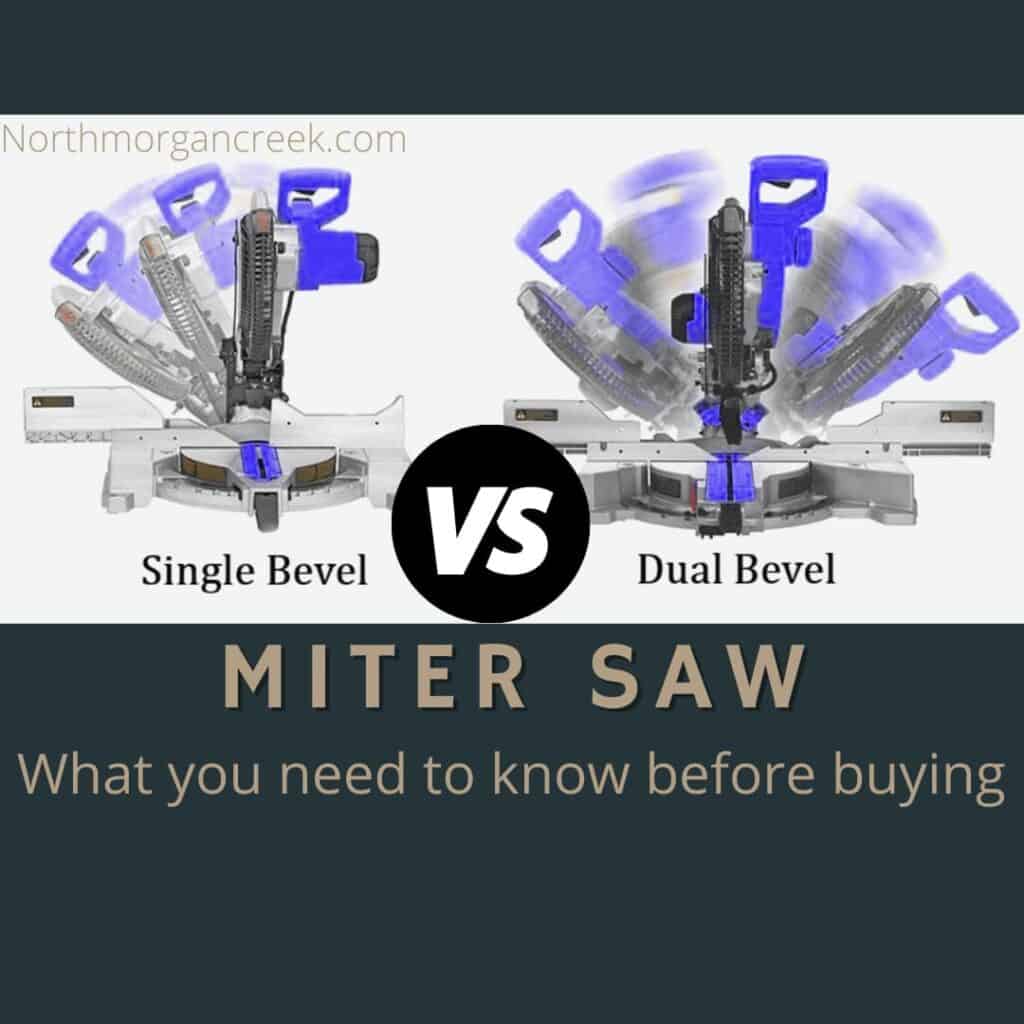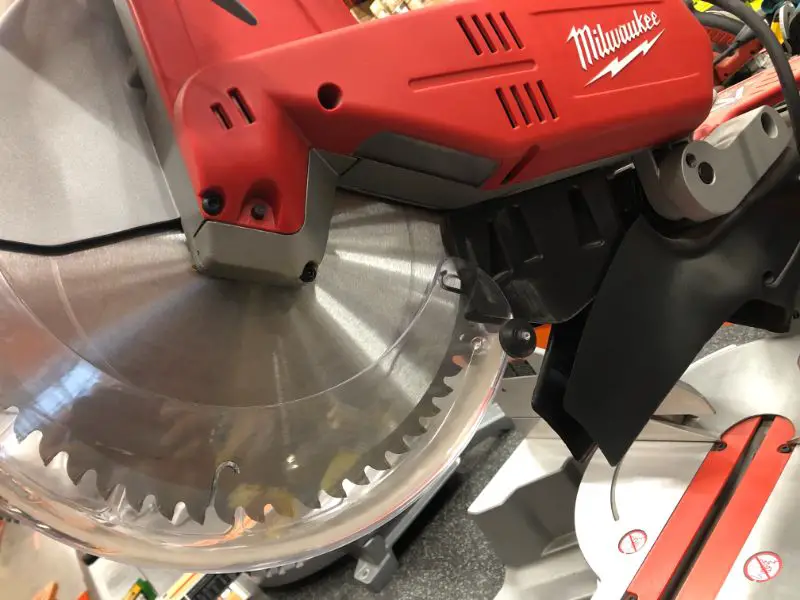A miter saw is a power tool that has a motor that rotates a saw blade to enable you to make cuts at high speed. In order for your cuts to be accurate and clean, the blade must be sharp and in good repair. A bad saw blade means bad cuts!
How a Miter Saw Blade Can Go Bad
Over time, your miter saw blade will go dull or even rust. If you live in an area with high humidity or extreme temperature swings, the blades can warp.
If your blade is bad, you will end up with ragged-looking cuts, or you may even burn the wood. So, how do you know if your miter saw blade is bad? Luckily, the key signs that your blade is on its last leg are easy to identify.
Below are six signs that it may be time to consider replacing your miter saw blade.
Wood Becomes Hard to Cut
If you are attempting to make some of your typical cuts and you notice that the miter saw is no longer powerful enough to get through, it may be a sign that your blade is bad. When your tool is struggling to cut through pieces of wood that use to be a breeze, the blade may be dull.
In addition, you may also notice that each of your cuts takes longer than it used to, or that you have to use more force to push the blade through the material. When your miter saw blade is in a good condition, it should slice through the wood like butter.
Wood Starts Chipping
Cutting across the grain of your wood with a bad miter saw blade can lead to chipping or tear outs. This is because the blade lifts up small pieces of grain as it exits the wood. When this happens, you will end up with ugly edges because there will be splinters at the cutting point.
Assuming your wood position is good, chipping is generally a sign that the miter saw blade either needs to be sharpened or needs to be replaced. A new one should once again give you nice, clean cuts.
Slowly Spinning Blade
A dull blade may result in a slower miter saw. If you notice that the blade rotation speed is significantly reduced when you are making your cuts, you may have a bad blade. Generally, a blade that is spinning slower causes more friction, thus your cuts are more difficult. This increased difficulty also puts more wear on the motor of your saw as it can cause it to overheat. You can even trip a breaker!
A Change in Sound
If you use your miter saw often, you are probably very familiar with the sound it makes while in use. Should this sound change, you may want to inspect your saw blade. A slower-spinning, dull disc will cause the saw to work harder. Thus, the sound from the motor will likely sound more labored.
Burn Marks on Wood
As mentioned above, a dull blade causes more friction when it is cutting through pieces of wood. In addition to being ragged, your cuts may also start showing burn marks on them at the point of contact with the blade. You may even see the wood smoking as it burns.
In general, the burn marks are easy to see making it a clear sign that your miter saw blade is bad. However, you can sometimes confuse burn marks with the contour of the wood, but you should still be able to smell the burnt wood scent. The odor is similar to that of burnt toast.
Missing or Discolored Teeth
A newly purchased saw blade has very shiny teeth that are very sharp. With use, the miter saw blade teeth may become dirty which can cause some of the issues mentioned above like burn marks or less clean cuts.
In addition to dirty teeth, your disc may be missing teeth altogether. Cutting something that is too hard or dropping your blade on a concrete floor can cause some of the teeth to break off. Not only will missing teeth mean substandard cuts, but it can also be dangerous to use a blade in this condition.
When should I change my Miter Saw Blade?
You should change your miter saw blade once you notice any missing teeth or damage to the blade. Most dull blades can be sharpened and continued to be used for a long time after they’ve dulled for the first time.
How to Keep Your Miter Saw Blade From Going Bad
If you want your miter saw blades to last, then you need to take proper care of them. While the act of using the blade will eventually mean it needs to be sharpened, there are a few things you can do to keep it from going bad longer.
First of all, you need to make sure that you are storing your blades in a location that is dry and doesn’t have too much humidity. In some climates, this may be easier said than done, but it will definitely keep your blade from rusting and warping if you can do so.
Secondly, you want to handle them with care. Of course, you know the blades are sharp and mishandling them can lead to injury, but dropping them or storing them carelessly can also lead to missing teeth. Blades should also be cleaned at regular intervals to keep dirt from building up on the teeth.
Many miter saw blades can have their life extended with a simple cleaning. Over time resin or similar materials can build up on the teeth of the blade and reduce the blades cutting ability. A simple cleaning will bring it back to life.

